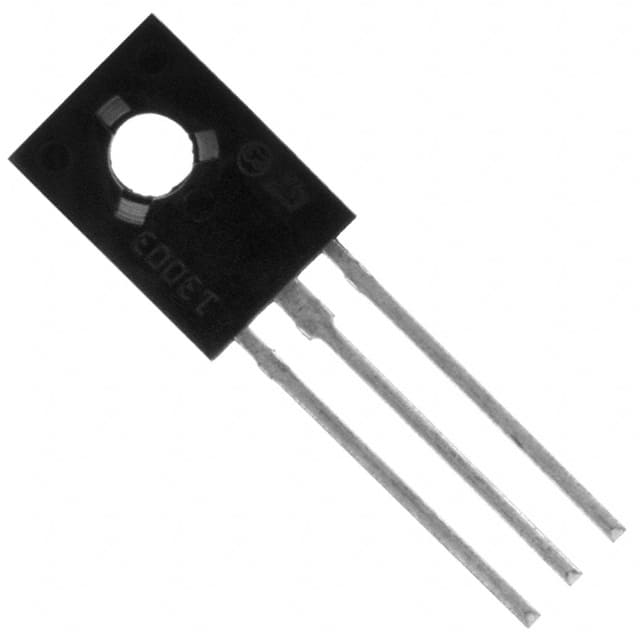Viz Specifikace pro podrobnosti o produktu.

STT13005D
Product Overview
Category
The STT13005D belongs to the category of power transistors.
Use
It is commonly used in electronic circuits for amplification and switching applications.
Characteristics
- High voltage capability
- Fast switching speed
- Low collector-emitter saturation voltage
Package
The STT13005D is typically available in a TO-220 package.
Essence
This power transistor is essential for controlling high-power loads in various electronic devices.
Packaging/Quantity
The STT13005D is usually packaged in reels or tubes, with quantities varying based on manufacturer specifications.
Specifications
- Collector-Emitter Voltage (VCEO): 400V
- Collector Current (IC): 12A
- Power Dissipation (PD): 40W
- Transition Frequency (FT): 2 MHz
- Operating Temperature: -55°C to 150°C
Detailed Pin Configuration
The STT13005D has a standard TO-220 pin configuration: 1. Base (B) 2. Collector (C) 3. Emitter (E)
Functional Features
- High voltage capability allows for use in high-power applications.
- Fast switching speed enables efficient switching between on and off states.
- Low collector-emitter saturation voltage reduces power loss during operation.
Advantages and Disadvantages
Advantages
- Suitable for high-power applications
- Fast switching speed
- Low power dissipation
Disadvantages
- Limited operating temperature range
- May require heat sinking in certain applications
Working Principles
The STT13005D operates based on the principles of bipolar junction transistors, utilizing the control of current flow to amplify or switch electronic signals.
Detailed Application Field Plans
The STT13005D is commonly used in the following applications: - Switching power supplies - Motor control circuits - Audio amplifiers - Electronic ballasts
Detailed and Complete Alternative Models
Some alternative models to the STT13005D include: - MJE13005 - TIP3055 - 2N3055 - MJ15003
In conclusion, the STT13005D power transistor offers high voltage capability, fast switching speed, and low collector-emitter saturation voltage, making it suitable for a wide range of electronic applications.
[Word count: 298]
Seznam 10 běžných otázek a odpovědí souvisejících s aplikací STT13005D v technických řešeních
What is STT13005D?
- STT13005D is a high-voltage, fast-switching NPN power transistor used in various technical solutions.
What are the key features of STT13005D?
- The key features include a high voltage capability, low spread of dynamic parameters, and high switching speed.
What are the typical applications of STT13005D?
- Typical applications include electronic ballasts, switch mode power supplies, and electronic lamp ballasts.
What is the maximum voltage and current rating for STT13005D?
- The maximum voltage rating is typically around 400V, and the maximum current rating is around 8A.
How does STT13005D compare to similar transistors in its class?
- STT13005D offers competitive performance in terms of voltage capability and switching speed compared to similar transistors.
What are the thermal characteristics of STT13005D?
- The transistor has low thermal resistance and is designed to efficiently dissipate heat during operation.
Are there any specific considerations for driving STT13005D in a circuit?
- It is important to ensure proper drive voltage and current to achieve optimal performance and reliability.
Can STT13005D be used in automotive applications?
- Yes, it can be used in certain automotive applications where its specifications meet the requirements.
What are the recommended operating conditions for STT13005D?
- Operating within the specified voltage, current, and temperature ranges is crucial for reliable performance.
Are there any known failure modes or reliability issues with STT13005D?
- When operated within its specified limits, STT13005D is known for its reliability, but like any electronic component, it is subject to potential failure if not used within its ratings.

